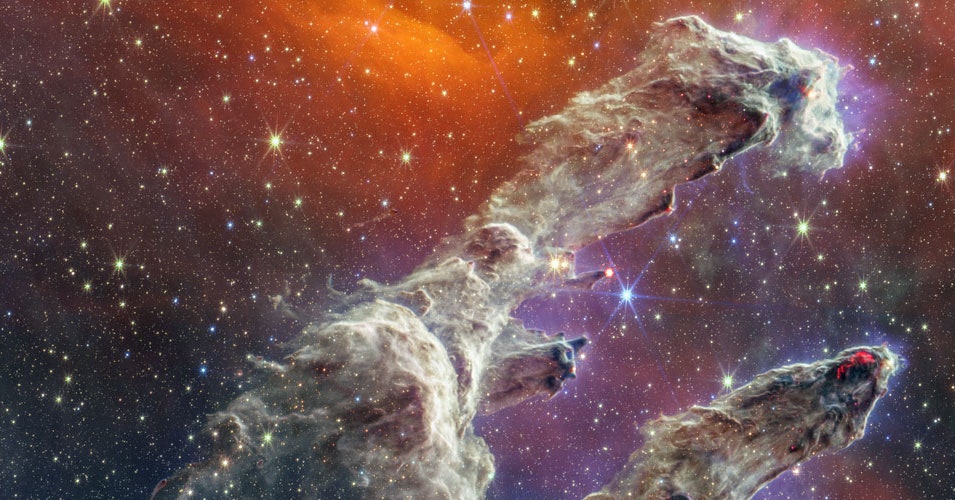
Nearly a hundred different types of amino acids have been observed in meteorites, but only a dozen of the 20 that are essential for life have been found. Biological amino acids also have a peculiarity that gives them away: They all have a “left-handed” structure, whereas abiotic processes create left- and right-handed molecules in equal measure. Several meteorites discovered on Earth have an excess of left-handed amino acids, Dworkin says—the only non-biological system ever observed with this imbalance.
For this experiment, the team tested the theory that amino acids were first created within interstellar molecular clouds, then rode to Earth inside asteroids. They decided to recreate the conditions these molecules would have been exposed to at each stage in their journey. If this process produced the same assortment of amino acids—in the same ratios—as those found in recovered meteorites, it would help validate the theory.
The researchers began by creating the most common molecular ices found in interstellar clouds—water, carbon dioxide, methanol, and ammonia—in a vacuum chamber. Then they bombarded the ices with a beam of high energy protons, mimicking collisions with cosmic rays in deep space. The ices broke apart and reassembled into larger molecules, eventually forming a gunky residue visible to the naked eye: chunks of amino acids.
Next, they simulated the interior of asteroids, which contain liquid water and can be surprisingly hot: between 50 and 300 degrees Celsius. They submerged the residue in water at 50 and 125 degrees Celsius for different lengths of time. This boosted the levels of some amino acids, but not others. The amount of glycine and serine, for example, both doubled. The alanine content stayed the same. But their relative levels remained consistent before and after the chunks were plunged into the asteroid simulation—there was always more glycine than serine, and more serine than alanine.
This trend is noteworthy, Qasim says, because it shows that conditions within the interstellar cloud would have had a strong influence on the makeup of amino acids inside the asteroid. But ultimately, their experiment ran into the same problem other lab studies have: The distribution of amino acids still didn’t match that found in real meteorites. The most notable difference was the excess of beta-alanine over alpha-alanine in their lab samples. (In meteorites, this typically occurs the other way around.) If there’s a recipe for creating life’s precursors, they hadn’t found it.
That’s likely because their recipe was too simple, Qasim says: “The next experiments need to be more complicated—we need to add more minerals, and consider more relevant asteroid parameters and conditions.”
But there’s another possibility. Maybe the meteoritic samples they’ve been using for comparison are contaminated. As the meteorites crash-landed, they could have been changed by their interactions with Earth’s atmosphere and biology, as well as centuries of geological activity that has melted, subducted, and recycled the planetary surface.
One way to test this is by using a pristine sample as the starting point: This September, NASA’s OSIRIS-REx mission will bring home something like a 200-gram chunk of the asteroid Bennu. (That’s 40 times bigger than the last sample we got of untouched space rock.) A quarter of the sample will be analyzed for amino acids, which will help nail down the source of discrepancies between lab studies and meteorites. It could also uncover what other fragile materials are present in asteroids, but can’t survive the trip to our planet without the protection of a spacecraft. That information would help Qasim’s team perfect their recipe.


